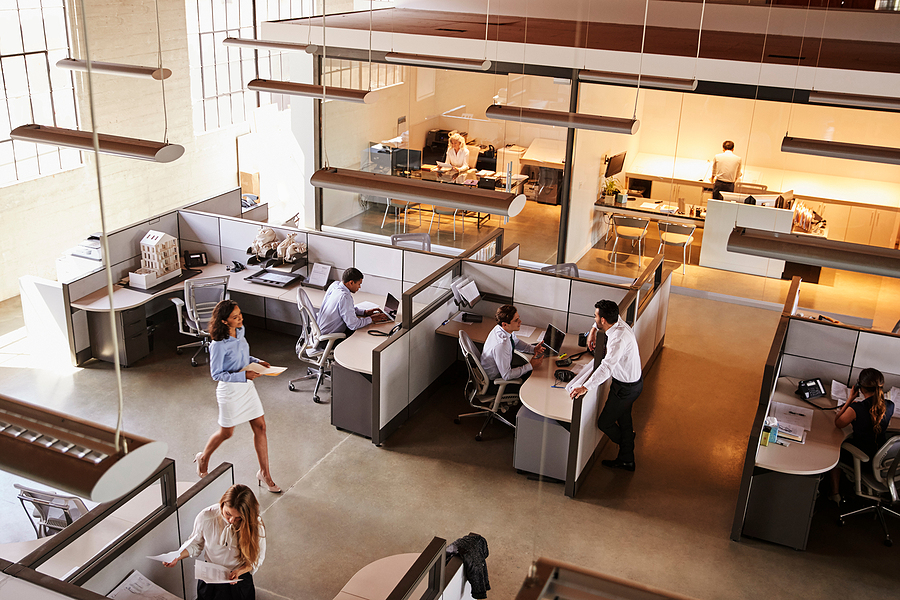Navigating tenant improvements (TIs) can be a daunting task for commercial tenants, especially those who are small business owners. But it doesn’t have to be. Understanding the ins and outs of TIs can not only save you money but also ensure your space perfectly suits your business needs.
This guide will walk you through the complex world of tenant improvements, from deciphering lease agreements to finalizing your bespoke workspace. Whether you’re a seasoned lessee or just dipping your toes into commercial real estate, this blog will arm you with the knowledge to make informed decisions.

What are Tenant Improvements (TIs)?
Tenant improvements, often abbreviated as TIs, refer to the customizations and modifications made to a rental space by or for a tenant, tailored to meet specific business needs or preferences. These upgrades can vary widely in scope, ranging from minor cosmetic changes like a fresh coat of paint, new carpeting, or updated fixtures, to significant structural modifications such as relocating walls, installing new lighting systems, or even reconfiguring entire layouts. The process might involve working with architects or designers to ensure that the changes align with the tenant’s vision and functional requirements.
The significance of tenant improvements lies in their transformative ability to convert a generic, one-size-fits-all space into a highly functional, business-specific environment. By customizing the rental space, tenants can create an atmosphere that enhances productivity, reflects their brand identity, and meets operational demands.
Common types of TIs include updates to the interior décor to reflect the company’s aesthetic, technological installations such as advanced communication systems or data networks, and adjustments to the layout to better accommodate equipment or staff workflows. These improvements not only optimize the space for current needs but can also increase the property’s value, making it a win-win situation for both the tenant and the landlord.
The Process of Navigating Tenant Improvements
Understanding Your Lease Agreement
Your commercial lease agreement is your roadmap for tenant improvements. Key clauses related to TIs are often tucked away in the fine print, dictating everything from the scope of permissible changes to the allocation of costs. It’s crucial to identify who is responsible for what, as well as any obligations regarding maintenance or restoration upon lease termination. Pay special attention to the tenant improvement allowance, which specifies the landlord’s contribution to the upgrade costs.
Initial Planning and Negotiation
Before putting pen to paper, proactive planning and negotiation are essential. Discuss tenant improvement expectations with your landlord upfront, ensuring they are included in your lease agreement. This is your opportunity to negotiate the tenant improvement allowance, potentially saving significant sums down the line. Clarify which improvements are critical for your business and which could be compromised if necessary. Consider involving a commercial lease negotiation expert to advocate on your behalf.
Design and Building Phase
Once your lease is settled, the design phase begins. This stage is where your vision for the space takes shape. Key considerations include how the layout supports workflow and customer interaction. Engage with a reputable commercial general contractor who can bring design concepts to life while adhering to your budget and timeline. Managing the building process requires clear communication and regular updates to ensure the project stays on track.
Costs and Financing
Tenant improvement projects often come with hefty price tags. A thorough breakdown of costs is vital, covering materials, labor, permits, and other fees. While the tenant improvement allowance can alleviate some financial burden, you may need to explore additional financing options. Business loans, lines of credit, or even crowdfunding could be viable paths to fund your TIs without straining cash flow.
Completion and Post-Occupancy
The final stretch involves inspections and approvals to ensure all work complies with local building codes and regulations. Once completed, assess the improvements to confirm they meet your operational needs and aesthetic desires. Moving in and settling down should be seamless if the TIs were thoughtfully executed. Regular maintenance checks can prolong the life of the renovations and prevent costly repairs later on.
Common Mistakes to Avoid
Overlooking Lease Terms Related to TIs
A common pitfall is glossing over lease terms that pertain to lessee improvements. Ignorance here can lead to disputes or unexpected costs. Always revisit the lease if uncertainties arise during the tenant improvement process to ensure compliance with stipulated terms.
Underestimating Costs and Timelines
Misjudging the financial or temporal scope of your tenant improvements can derail a project. Avoid surprises by consulting with professionals to draft detailed cost estimates and realistic timelines. This foresight will help maintain your budget and prevent delays.
Failing to Communicate Effectively with the Landlord
Effective communication with your landlord can make or break your tenant improvement experience. Keep them informed at every stage, particularly if unforeseen changes or challenges occur. Open dialogue promotes a cooperative relationship, facilitating smoother negotiations and project execution.
FAQs About Tenant Improvement Construction
Can I negotiate TIs before signing a lease?
Yes, negotiating tenant improvements is common before signing a lease. Be sure to address this with your landlord during the initial negotiations.
How long does the TI process typically take?
The timeline for tenant improvements can vary significantly depending on the scope of work and approval processes. It’s best to consult with professionals for accurate estimates.
Who is responsible for obtaining permits for TIs?
Typically, the responsibility falls on the landlord or general contractor. However, it’s essential to clarify this in your lease agreement.
Can I make changes to my rental space without my landlord’s permission?
It depends on the terms of your lease agreement. Generally, significant alterations will require the landlord’s approval and may even incur penalties if made without consent.
Conclusion
Navigating tenant improvements as a commercial tenant can seem complex, but a structured approach demystifies the process. From lease negotiation to project completion, being proactive and informed ensures you transform your rented space into a productive and appealing environment. We encourage you to take charge of your TIs, leveraging professional guidance from commercial general contractors to optimize your outcomes.
Ready to elevate your business space? Connect with BAF Corporation at 317-253-0531 to speak with an expert commercial general contractor about your options for tenant improvement remodeling in Indianapolis, Indiana. We serve clients in all industries and throughout the state.
Related Posts:
Remodel Your Space Without Breaking the Bank: Budgeting Tips for Commercial Tenants
Transforming Commercial Spaces: Innovative Remodel Ideas for Tenants
What to Expect When Planning a Commercial Tenant Finish









